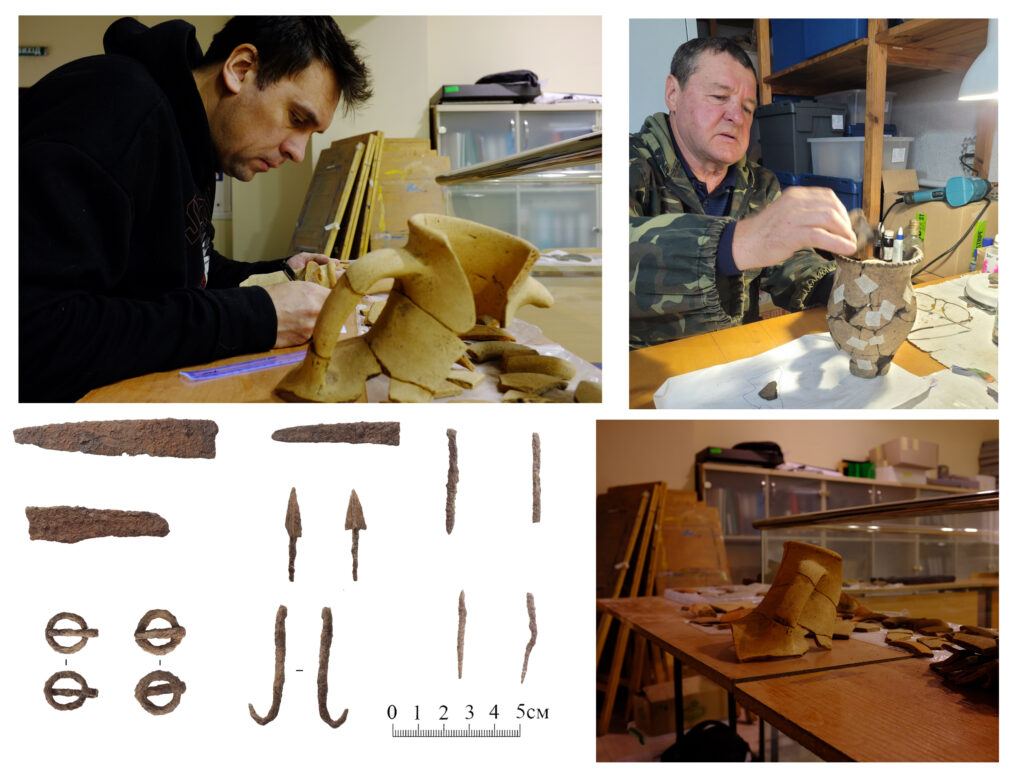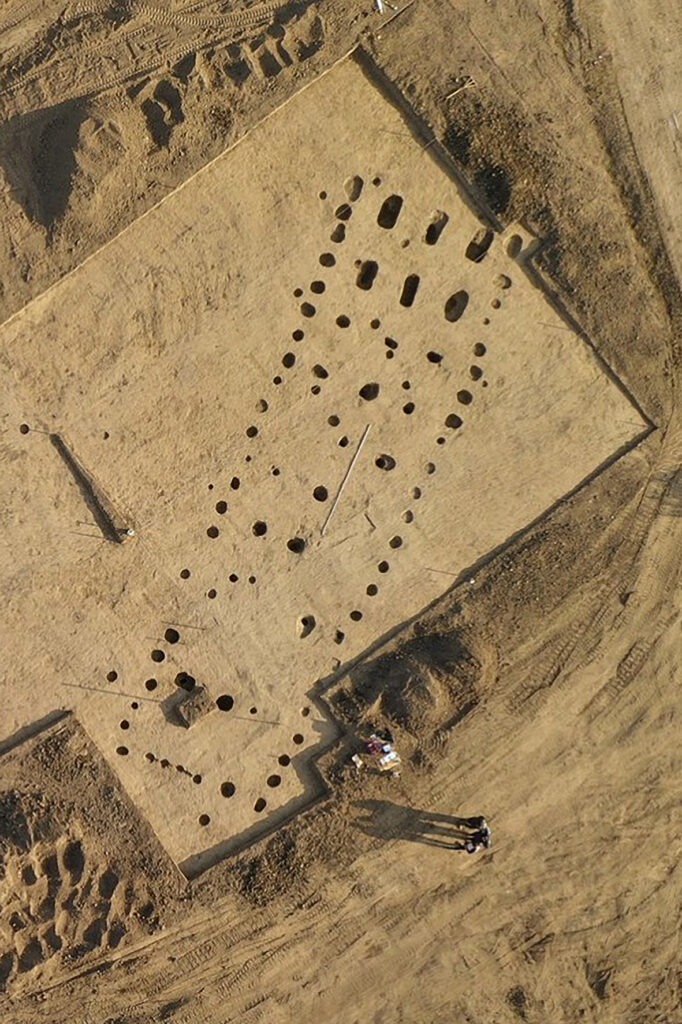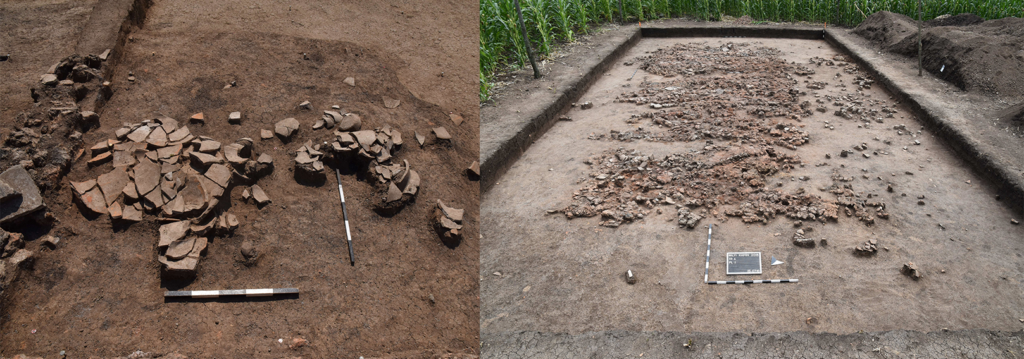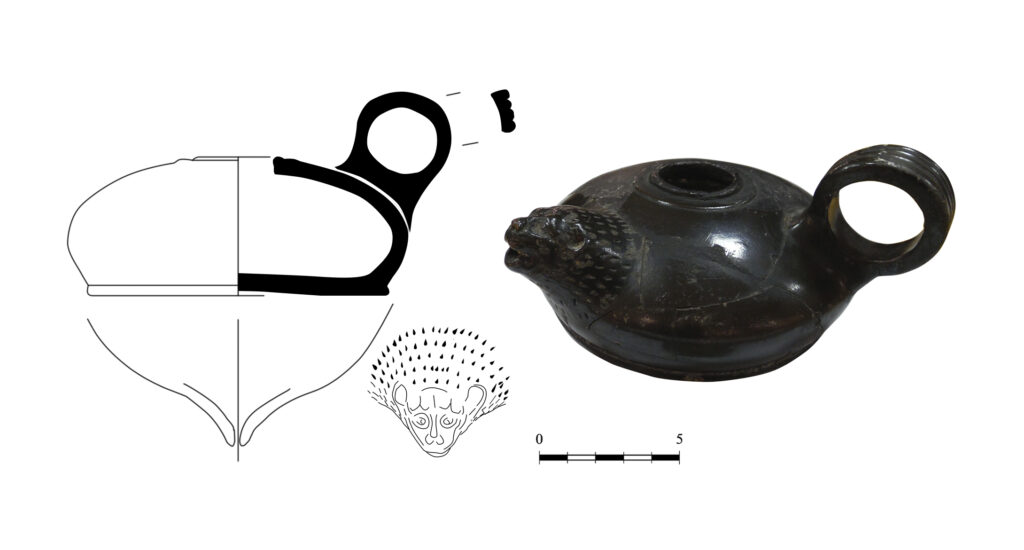The last three centuries BC are regarded as the “Dark Ages” in the ancient history of the forest-steppe zone between the Dnipro and Siversky Donets rivers. The end of the Scythian era in the Northern Black Sea region, the time of the appearance of the Sarmatians and the nature of the relationship between the new wave of nomads and local communities are still the subject of scientific discussions. Kostyantyn Pelyashenko, senior researcher at the Museum of Archeology V. N. Karazin Kharkiv National University and leading researcher at the Historical and cultural reserve “Bilsk”, conducted research on already known archaeological evidence of the 3rd–1st centuries BC in the Dnipro-Donetsk forest-steppe, and also organized excavations of the most promising archaeological site of this period – the Kotelva hillfort.
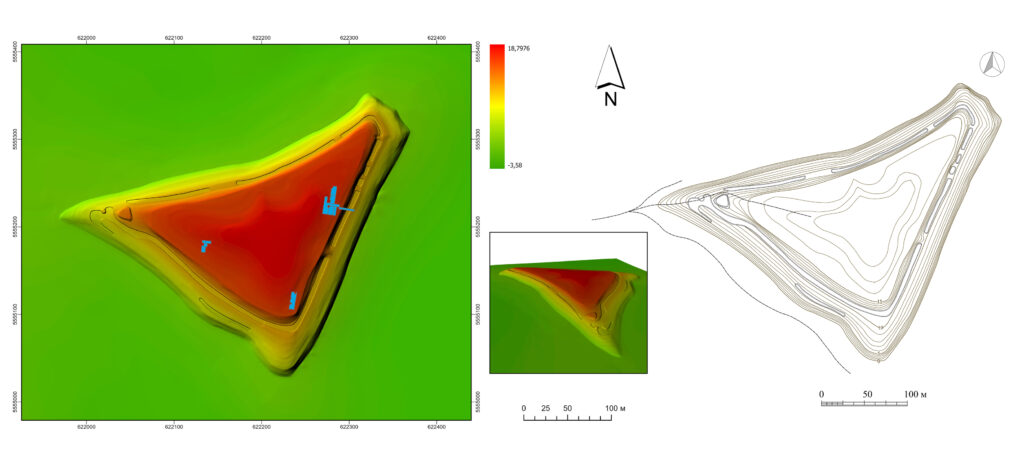
Archaeological record of the 3rd–1st centuries BC in the Dnipro-Donetsk forest-steppe is scarcely addressed in the scientific literature. The systematization and mapping of finds of this period require the study of archival materials, as well as working with the materials themselves, which are stored in various museums in Ukraine. Particular attention should be paid to the excavation materials of a number of ancient hillforts in the Dnipro-Donets forest-steppe, which were excavated over relatively large areas: Basivka, Glinske, Bititsa, Tsyrkuny. These sites remained in use also after the classical Scythian period – in the late Scythian/early Sarmatian time.
The Kotelva hillfort deserves special attention (Fig. 1). The site is located in the Vorskla river basin, not far from the largest fortified settlement of Scythian times – the Bilsk hillfort. A detailed study of the materials allows us to assert that by the time the Kotelva hillfort was founded, life on the territory of the Bilsk hillfort had already ceased. Therefore, this site is of particular value for the study of Late Scythian history in the Ukrainian forest-steppe.
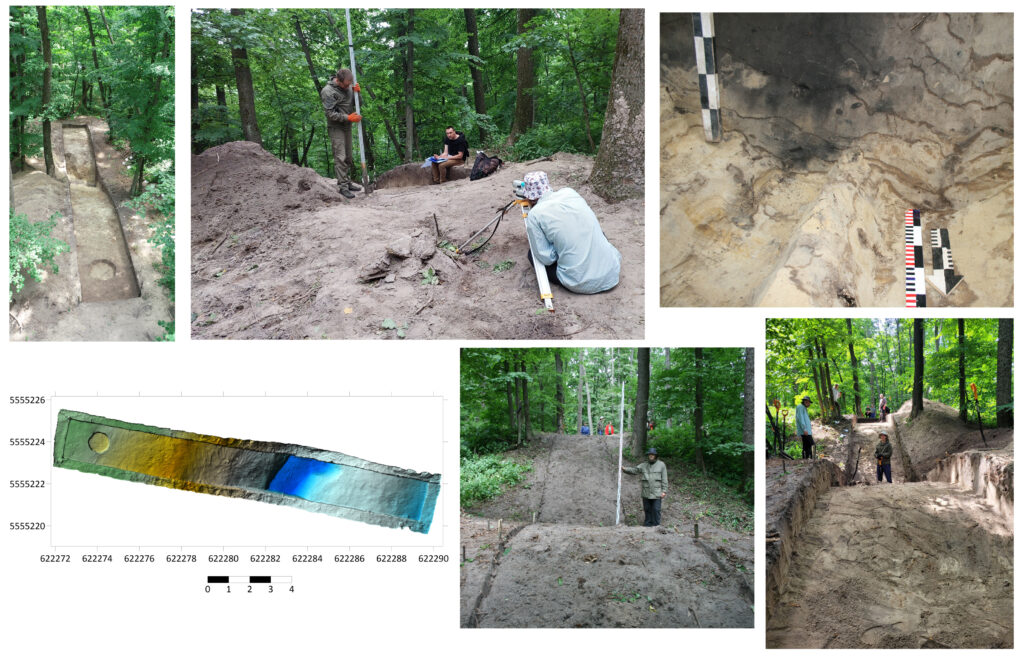
The excavations of the Kotelva hillfort in 2023 provided valuable archaeological material of the 3rd–1st centuries BC in the Dnipro-Donetsk forest-steppe. An excavation was carried out on the slope of the high cape of the ancient settlement and its ditch, which made it possible to attribute the construction of fortifications and the foundation of the ancient settlement to the Late Scythian period (Fig. 2).
The household complexes which are characteristic of sedentary communities are practically not recorded at the site. On a relatively large area, more than 500 m², not a single dwelling has yet been documented and only a small number of structures used for subsistence purposes have been found (Fig. 3). Among the finds there are also practically no household tools related to agriculture. These facts most likely indicate that the site was only temporary used as a fortified fort. Of particular interest is an agglomeration of slag found on the periphery of the site. The metallographic and elemental analysis allows us to associate it with ironworking or forging. In the future, we plan to conduct geomagnetic studies at the site in order to identify production complexes, which are apparently associated with traces of iron ore mining and the manufacture of iron objects. Similar complexes are known for sites of the Sarmatian period, but in the area of the Middle Dnipro only in a later period.
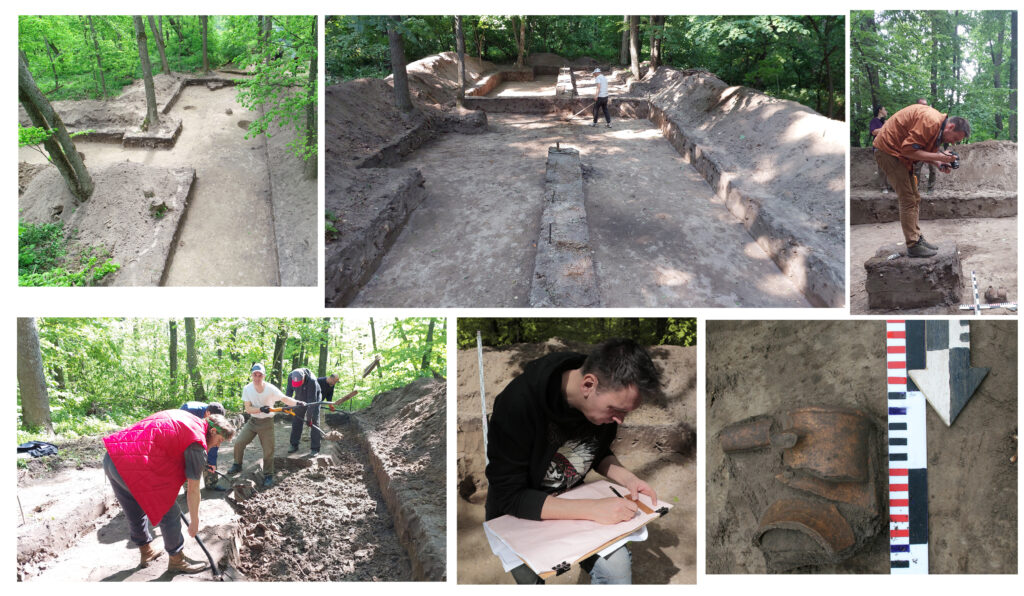
A large number of fragments of amphora containers, as well as iron weapons found during excavations in 2023, made it possible to clarify the chronology (Fig. 4). Today, the fort can be confidently dated within the second half of the 3rd– early 1st centuries BC. Finds of arrows of the Sarmatian type, elements of a military harness, gray pottery of eastern origin confirm the version of the arrival of Sarmatian nomads in the Dnipro-Donets forest-steppe no later than the 2nd century BC. A small number of burials in the region also proves the presence of new nomads in the region.
Detailed research results will be presented in a series of scientific publications, and will also become the basis for further study of this complex and interesting period of ancient history.
Kostyantyn Pelyashenko
